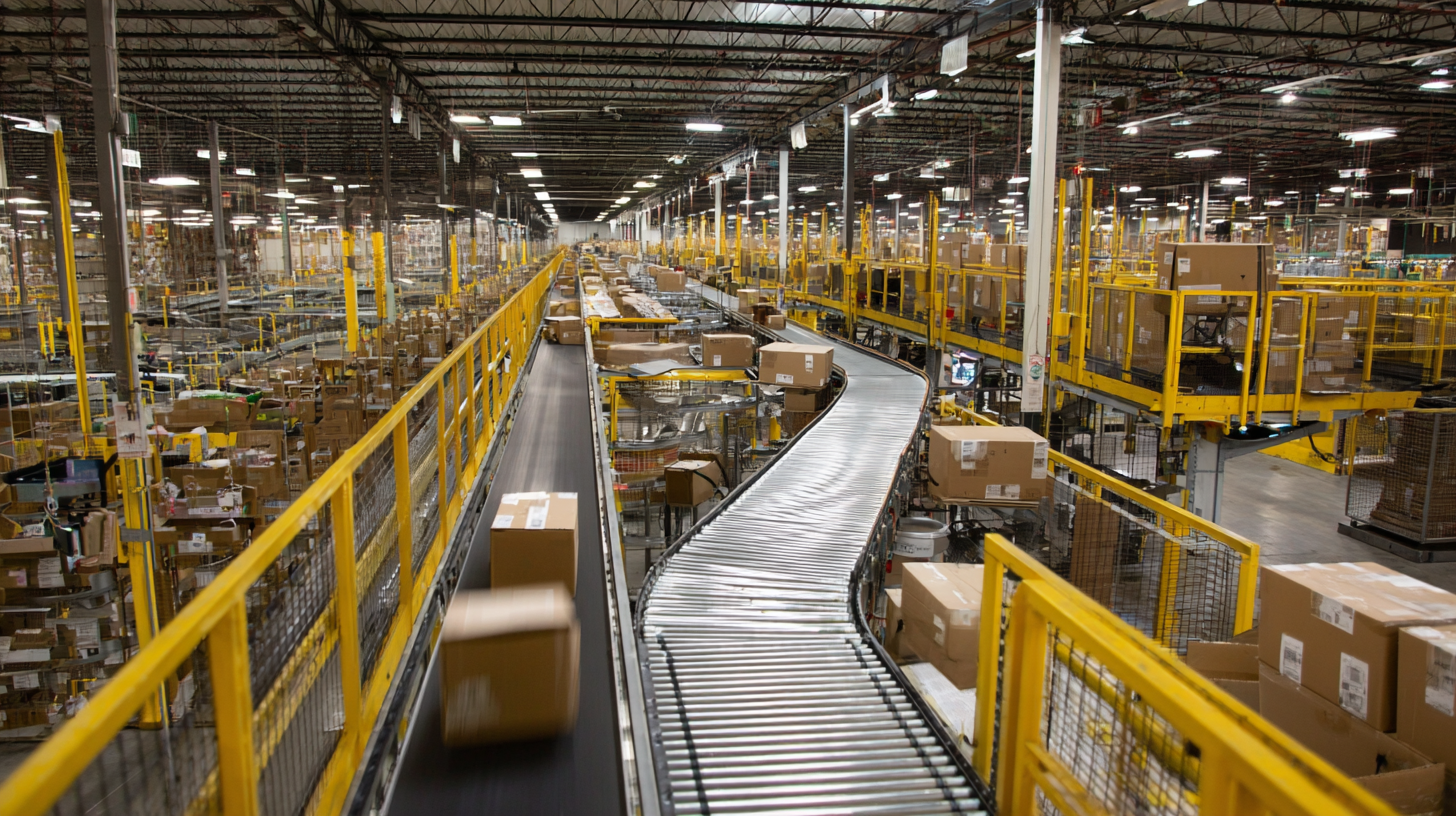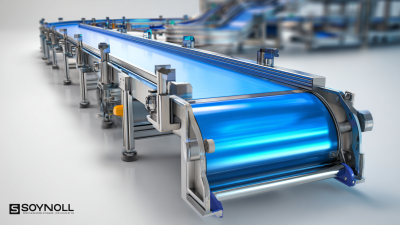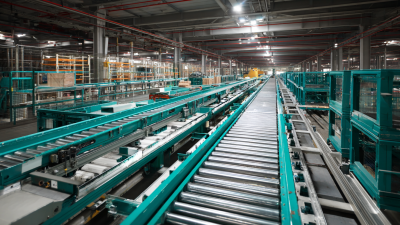In the rapidly evolving landscape of modern warehousing, the importance of efficient material handling cannot be overstated. A recent report by the Material Handling Industry of America (MHIA) indicates that the adoption of automated systems, including Storage Conveyor Systems, can improve operational efficiency by up to 30%. These systems play a pivotal role in streamlining workflows and reducing labor costs, as they facilitate seamless movement of goods across various stages of the supply chain. Furthermore, studies by the Warehousing Education and Research Council (WERC) highlight that incorporating advanced conveyor technology can lead to a significant decrease in product damage and better inventory accuracy. As businesses strive to meet escalating consumer demands and optimize their logistics operations, understanding the benefits of implementing a Storage Conveyor System becomes essential for achieving a competitive edge in the market.

Storage conveyor systems play a pivotal role in enhancing warehouse productivity by streamlining the movement of goods. These systems facilitate the efficient transfer of products from one area to another, minimizing the time workers spend on manual handling. By automating the transportation process, warehouses can significantly reduce the likelihood of human error, leading to improved accuracy in order fulfillment and inventory management. The design of modern conveyor systems allows for flexibility in layout, which can be tailored to suit specific warehouse operations, ultimately driving productivity gains.
Additionally, the integration of storage conveyor systems fosters better space utilization within a warehouse. With vertical storage options and compact configurations, these systems make it possible to maximize the available square footage. This leaves more room for storage or other operational activities, further enhancing workflow efficiency. Furthermore, the ability to connect different areas of a warehouse seamlessly encourages faster pick and pack processes, allowing for quicker response times to customer demands. Overall, the implementation of storage conveyor systems is a strategic investment in enhancing overall warehouse productivity.
In today's fast-paced logistics environment, the implementation of storage conveyor systems has emerged as a game-changer for modern warehousing operations. According to a report from the Material Handling Industry of America, integrating conveyor systems can yield time savings of up to 50% in sorting and transporting goods within a warehouse. This efficiency is crucial as companies strive to meet growing consumer demands for faster delivery times.

Moreover, the cost reductions associated with conveyor systems are significant. A study conducted by the Warehousing Education and Research Council highlights that businesses can reduce labor costs by approximately 30% through automation and the efficient handling of inventory. By minimizing manual handling, companies not only save on wages but also reduce the risk of injuries, leading to lower insurance expenses. The strategic use of storage conveyor systems ultimately enhances operational efficiency while contributing to a healthier bottom line.
In the modern warehousing landscape, space optimization has become a critical focus for businesses aiming to enhance efficiency and reduce operational costs. According to a report from the Warehousing Education and Research Council (WERC), integrating storage conveyor systems can improve warehouse space utilization by up to 30%. These systems streamline processes, allowing for denser storage arrangements and maximizing vertical space by facilitating multi-level storage solutions.

Tips: When implementing a storage conveyor system, consider conducting a thorough analysis of your current workflow. Identify bottlenecks and assess how different conveyor layouts could optimize the flow of goods, helping you select the system that best meets your needs.
Moreover, advanced conveyor systems often come equipped with intelligent technology, allowing for real-time inventory tracking and automated sorting. A study from the Material Handling Industry of America (MHIA) reveals that such automation can lead to a 20-50% increase in order picking efficiency. This not only enhances the utilization of existing space but also significantly decreases the turnaround time for inventory replenishment.
Tips: Regular training and updates for staff regarding the operation of new systems can further boost their efficiency. Involve your team in discussions about workflow improvements and encourage feedback to continually optimize system performance.
In today's fast-paced retail and logistics environments, storage conveyor systems have emerged as pivotal tools for enhancing efficiency in warehousing operations. Numerous case studies illustrate how companies have successfully integrated conveyor systems to streamline processes and boost productivity. For instance, a notable transformation can be seen in the case of a major stationery supplier that adopted an intelligent storage solution tailored by a prominent technology provider. This implementation not only improved their operational management but also dramatically increased their warehousing efficiency, allowing them to respond rapidly to market demands.
In another instance, a renowned international dining group leveraged cloud-based enterprise resource planning systems, significantly optimizing their supply chain efficiency. By integrating technology that allows real-time monitoring and management of their distribution channels, the company has managed to reduce operational costs and enhance service delivery. According to industry reports, organizations that have adopted automated conveyor systems generally experience a 30% increase in order fulfillment speed, proving the value of such investments. Moreover, the adaptability of conveyor technologies in various sectors, including manufacturing and e-commerce, highlights their critical role in driving operational excellence and scalability in modern warehousing strategies.
The future of warehousing is being transformed by advancements in storage conveyor technology, which are critical for enhancing operational efficiency. According to a report by Grand View Research, the global conveyor system market is expected to reach $7.7 billion by 2025, driven by the rising demand for automated solutions in logistics and distribution centers. Innovations such as modular conveyor systems and robotic integrations are facilitating more flexible and scalable operations, allowing warehouses to adapt quickly to changing market demands.
Moreover, the integration of IoT (Internet of Things) with storage conveyors is revolutionizing inventory management. A study by Research and Markets predicts that the IoT in logistics market will grow at a CAGR of 25.1% from 2022 to 2029. These technologies enable real-time tracking of goods, reducing bottlenecks and improving order accuracy. As storage conveyor systems become increasingly sophisticated, they not only optimize space utilization but also enhance overall productivity, paving the way for a more efficient and responsive warehousing environment.
| Parameter | Current Value | Expected Improvement (%) |
|---|---|---|
| Order Fulfillment Speed (hours) | 5 | 20 |
| Labor Cost per Order ($) | 10 | 15 |
| Space Utilization (%) | 75 | 90 |
| Maintenance Downtime (hours/month) | 10 | 30 |
| Energy Consumption (kWh/month) | 2000 | 10 |






